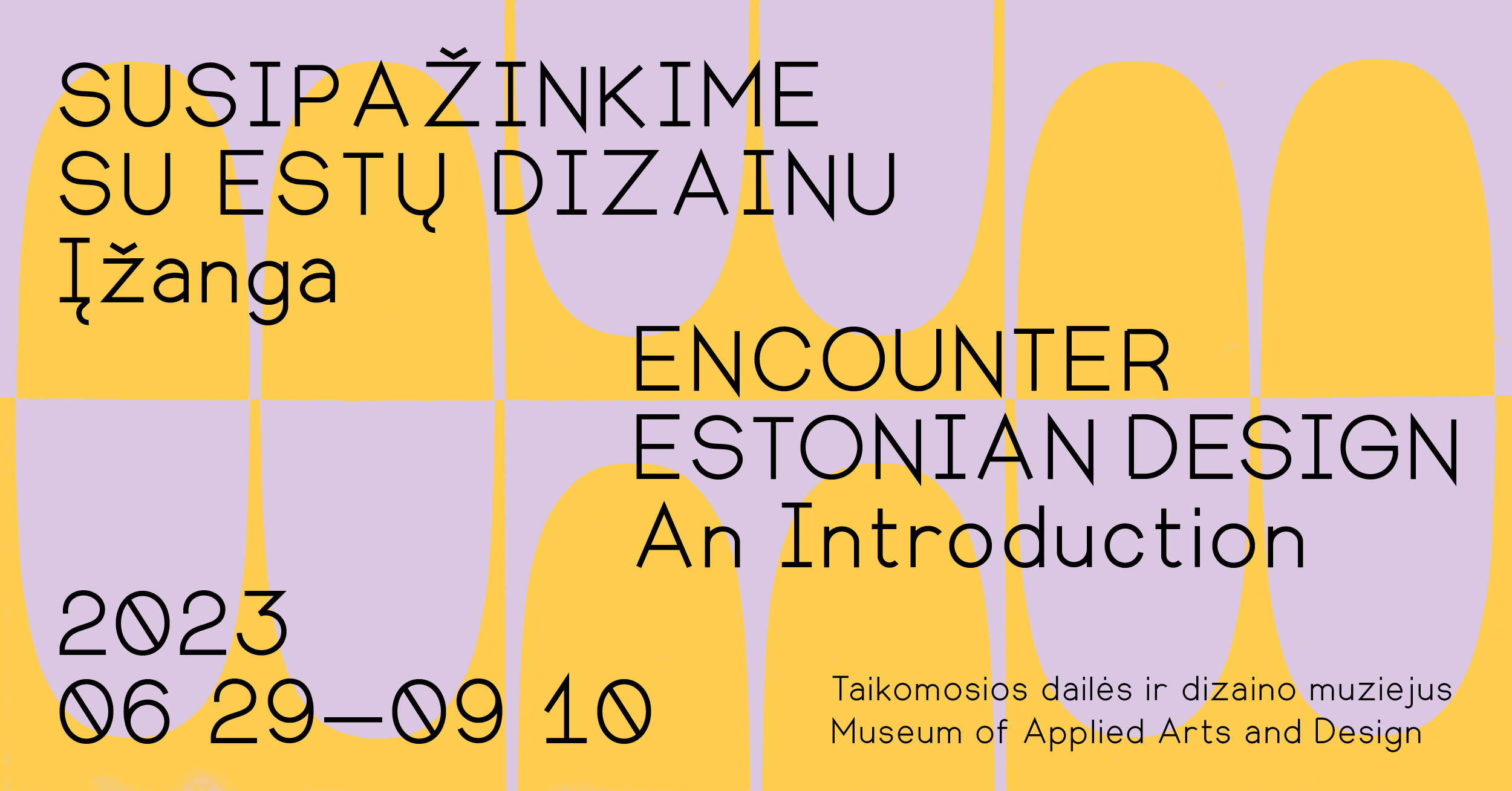Encounter Estonian Design. Introduction
 The Applied Arts and Design Museum of the Lithuanian National Museum of Art holds an exhibition of Estonian design Encounter Estonian Design. Introduction. The exhibition traces the trajectory of design in the neighbouring country, introducing along the way its design creators – starting with pioneers – furniture designer Anna von Maydell – up to celebrities of contemporary design and the leading design studios.
The Applied Arts and Design Museum of the Lithuanian National Museum of Art holds an exhibition of Estonian design Encounter Estonian Design. Introduction. The exhibition traces the trajectory of design in the neighbouring country, introducing along the way its design creators – starting with pioneers – furniture designer Anna von Maydell – up to celebrities of contemporary design and the leading design studios.
‘Estonian design attracts increasingly more attention, and this exhibition aims to map out different strata of Estonian design, its characteristics and diversity by bringing into closer focus selected items which shaped the Estonian design stage,’ says curator of the event, Kai Lobjakas. She also notes the existence of several differing concepts of design.
‘Some see design as a specific technical detail, others as a valuable chair, still others as an innovation that transforms peoples’ life,’ says the curator, ’therefore, we are faced with the question whether it is a thing, or maybe, a service, whether it is visible or invisible, whether it is a product, a unique item, or maybe, a phenomenon.’
The impetus for the development of Estonian design came from the School of Arts and Crafts founded in 1914. The alumni of the school created new design traditions at industrial enterprises of independent Estonia. Plenty of initiatives born during interwar years were sustained during the years of soviet occupation. This period in design was dominated by furniture, lamps, glass and ceramic products. The Estonian design of the period knit together pre-war modernism, soviet ideology and aesthetics and the features of Western culture, their produce gaining a ‘nearly-Western’ status. The Baltic countries turned into a kind of ‘the West’ inside the Soviet Union, while the ideas of Western consumer society seeped into the Soviet Union via products, tokens of the comforts of everyday life.
Estonians have achieved solutions resulting in innovative design. Minox sub-miniature ‘spy’ camera, and communication platform Skype, created after the restoration of Estonian independence, are examples.
‘After 1991,’ describes the present situation Kai Lobjakas, ‘quite a few designers have left to study and work abroad. New enterprises and new names in design emerged too. Today we have a strong core of innovating designers, while local producers and their products enjoy much attention. Despite some similarities to the early stages of the past century, present situation is different in many terms. Small business focused on conceptual creation and local market operate alongside business network competitive on the international market. Most visible are the companies experimenting with the established norms and creating new conceptual products.’
The story of Estonian design is also told by the largest companies of Estonian industrial design: A. M. Luther Furniture Factory, J. Lorup’s Glass Factory, E. Taska’s Leathercrafting Studio, Tarbeklaas Glass Factory, Standard Furniture Factory, Estoplast, Kunst and Kodu, Tallinn Construction Ceramics Factory (Tallinna Ehituskeraamikatehas), Punane RET, Art Products Factory (Kunstitoodete Kombinaat) and their leading ceramic, glass, textile, leather and radiotechnology wares. Another thread to follow the story of Estonian design is through individual key figures of 20th-21st – centuries design. From the pioneering furniture designer Anna von Maydell to present day stars like Martin Pärn, Tarmo Luisk, Veiko Liis, Jaanus Orgusaar, Kärt Ojavee, Raili Keiv, Kärt Põldmann, Marit Ilison, Warm North, Johanna Tammsalu, Monika Järg, Anton Koovit and small, yet distinct studios of contemporary design Kelpman Textile, Keha3, HUUM and others.
The exhibition has been organised by: Museum of Applied Arts and Design of the Lithuanian National Museum of Art, Estonian Museum of Applied Art and Design Museum
Exhibition curator: Kai Lobjakas
Exhibition sponsor: Lithuanian Council for Culture
3A Arsenalo st, Vilnius, Lithuania
+370 5 212 1813;
+370 5 261 25 48; +370 5 262 80 80.
tddm@lndm.lt













